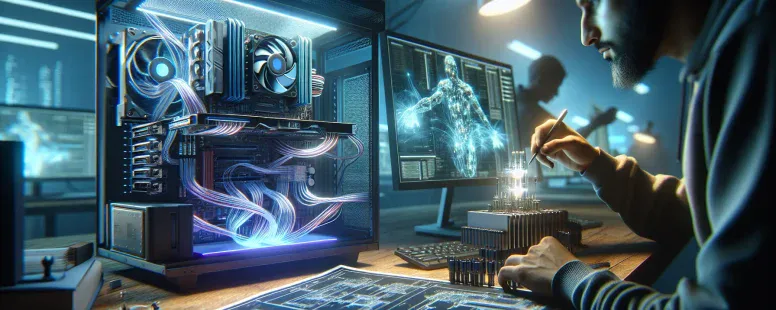GPU Versus CPU: Understanding the Key Differences
In the realm of computing, two powerful components hold the key to executing and processing the vast array of modern technological tasks: the Central Processing Unit (CPU) and the Graphics Processing Unit (GPU). Though often complementary in their functions, CPUs and GPUs have distinct roles, architectures, and applications that influence their performance and utility. Grasping their differences is essential for making informed decisions in hardware selection, especially with the increasing computational demands of contemporary software.
Introduction to GPUs and CPUs
What Is a Central Processing Unit (CPU)?
The CPU is often referred to as the ‘brain’ of the computer. It handles general-purpose operations, executing instructions and managing a wide range of tasks, from running operating systems to performing complex calculations. CPUs are characterized by their ability to handle sequential processing efficiently, making them ideal for tasks requiring a single thread or minimal parallelism.
What Is a Graphics Processing Unit (GPU)?
In contrast, the GPU is designed to handle highly parallelizable processes, such as rendering images and executing machine learning algorithms. Originally developed for rendering graphics in video games, GPUs now play a critical role in scientific computing, cryptocurrency mining, and artificial intelligence, thanks to their massive parallel processing capabilities.
Primary Distinctions Between GPUs and CPUs
Task Specialization
CPUs excel in general-purpose computing and control a computer’s overall function, while GPUs specialize in specific tasks that require parallel processing, such as rendering or running neural networks.
Processing Architecture
CPUs typically contain a few powerful cores optimized for latency and a broad range of computational needs. Conversely, GPUs feature thousands of smaller, efficient cores designed for running multiple operations simultaneously, ideal for parallel workloads.
Performance and Computational Capabilities
While CPUs offer high clock speeds and advanced coordination among their cores, GPUs deliver exceptional performance in scenarios demanding high throughput and parallel computation, such as 3D rendering and data analysis.
Use Cases for GPUs and CPUs
Scenarios Ideal for CPU Usage
CPUs are indispensable for tasks such as web browsing, administrative workload, and operations requiring complex decision-making workflows. Their versatility allows them to manage operating systems, applications, and peripheral communications seamlessly.
Applications Benefiting from GPU Usage
GPUs shine in areas like machine learning, visual effects production, and massive-scale data analysis. Their aptitude for handling extensive multi-threaded operations sets them apart for computationally intensive applications.
Impact of Integration of GPUs and CPUs
Modern Systems Combining GPUs and CPUs
Contemporary computer systems often integrate CPUs and GPUs to leverage their respective strengths. This synergy enables better performance across various workloads, such as gaming, video editing, and simulation.
Future Trends in Computational Hardware
Advancements in hardware are fostering an increased convergence of CPU and GPU functionalities, resulting in hybrid processors that redefine efficiency and performance capabilities, catering to the ever-growing demand for computational power.
- Alternatives To Docker Desktop Extensions - November 26, 2025
- GPU Versus CPU: Understanding the Key Differences - November 26, 2025
- Twin Versus Twin XL: Understanding the Differences - November 26, 2025







